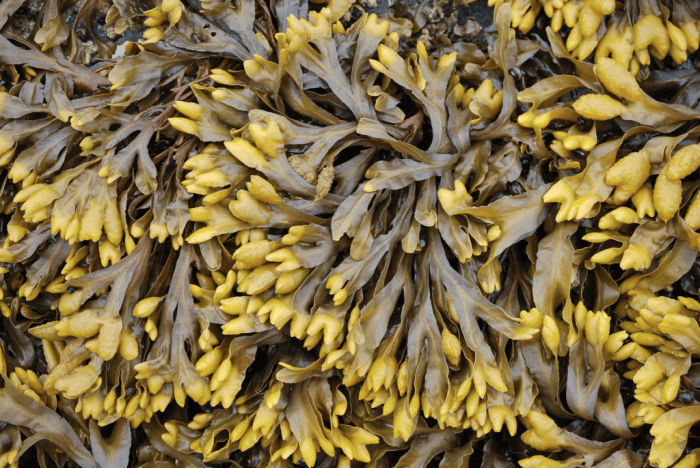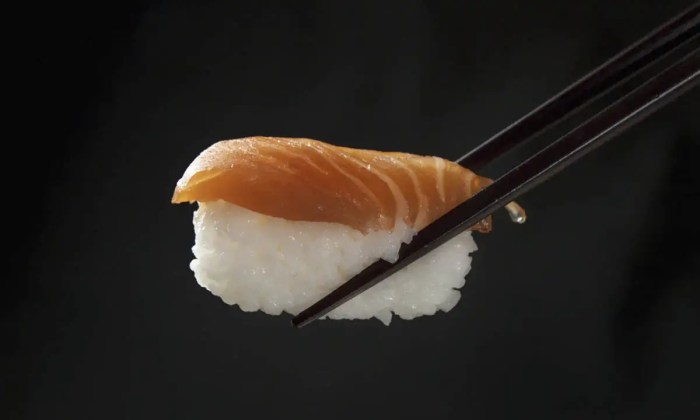Unveiling the enigma of seaweed in 41 down crossword, we embark on a journey to explore its fascinating world. From its diverse species and nutritional prowess to its culinary versatility and medicinal properties, seaweed unveils a tapestry of wonders that will leave you intrigued.
Join us as we delve into the depths of this marine marvel, uncovering its hidden treasures and unraveling its profound impact on our health, cuisine, and the environment.
Seaweed Species
Seaweeds are a diverse group of marine algae that can be found in a wide variety of habitats, from the intertidal zone to the deep sea. They come in a variety of shapes and sizes, and can be green, red, brown, or even black.
Some of the most common seaweed species include:
- Kelpis a large, brown seaweed that can grow up to 100 feet long. It is found in cold waters, and is an important food source for many marine animals.
- Sargassumis a floating seaweed that is found in tropical and subtropical waters. It is often referred to as “seaweed” and is a major nuisance to beachgoers.
- Noriis a red seaweed that is used to make sushi. It is also used in traditional Chinese medicine.
- Dulseis a red seaweed that is eaten as a food in many parts of the world. It is a good source of vitamins and minerals.
- Irish mossis a red seaweed that is used as a thickener in foods and cosmetics. It is also used in traditional Irish medicine.
Nutritional Value of Seaweed

Seaweed, a marine plant, has been gaining recognition for its exceptional nutritional value. It’s a rich source of essential vitamins, minerals, and antioxidants, making it a valuable addition to a healthy diet.
Seaweed contains an array of vitamins, including vitamin A, C, E, and K. Vitamin A supports eye health, while vitamin C boosts immunity and collagen production. Vitamin E acts as an antioxidant, protecting cells from damage, and vitamin K aids in blood clotting and bone health.
Minerals
Seaweed is also a significant source of minerals, including iodine, iron, calcium, and magnesium. Iodine is vital for thyroid function, while iron plays a crucial role in oxygen transport and red blood cell production. Calcium contributes to strong bones and teeth, and magnesium supports muscle function and nerve transmission.
Antioxidants
Seaweed is particularly rich in antioxidants, which help neutralize harmful free radicals in the body. These antioxidants include carotenoids, flavonoids, and polyphenols. Carotenoids, such as beta-carotene, have antioxidant and anti-inflammatory properties. Flavonoids protect against cell damage, and polyphenols have been linked to reduced risk of chronic diseases.
Incorporating seaweed into a healthy diet is relatively easy. It can be consumed fresh, dried, or powdered. Fresh seaweed can be added to salads, soups, and stir-fries. Dried seaweed, such as nori sheets, is commonly used in sushi. Powdered seaweed can be added to smoothies, dips, or as a seasoning.
Culinary Uses of Seaweed: Seaweed In 41 Down Crossword

Seaweed is a versatile ingredient that has been used in culinary traditions around the world for centuries. Its unique flavors and textures make it a popular addition to a wide variety of dishes, from salads to soups to sushi.
Types of Seaweed Used in Cooking
- Nori: A dark, papery seaweed that is commonly used to make sushi rolls.
- Wakame: A soft, chewy seaweed that is often used in salads and soups.
- Kombu: A thick, tough seaweed that is used to make dashi, a Japanese broth.
- Hijiki: A small, black seaweed that is often used in stir-fries and salads.
- Arame: A thin, delicate seaweed that is often used in salads and soups.
Culinary Applications of Seaweed
Seaweed can be used in a variety of culinary applications, including:
- Salads: Seaweed can be added to salads for a salty, umami flavor. It can be used fresh, dried, or rehydrated.
- Soups: Seaweed can be added to soups for a rich, flavorful broth. It can be used whole or chopped.
- Sushi: Seaweed is used to make sushi rolls, which are filled with rice, vegetables, and fish.
- Stir-fries: Seaweed can be added to stir-fries for a salty, savory flavor. It can be used fresh or dried.
- Snacks: Seaweed can be roasted or fried to make a crispy, salty snack.
Flavors and Textures of Seaweed
Seaweed has a variety of flavors and textures, depending on the type of seaweed and how it is prepared.
- Nori: Nori has a salty, umami flavor and a papery texture.
- Wakame: Wakame has a mild, slightly sweet flavor and a soft, chewy texture.
- Kombu: Kombu has a strong, salty flavor and a tough, chewy texture.
- Hijiki: Hijiki has a salty, slightly bitter flavor and a small, crunchy texture.
- Arame: Arame has a mild, slightly sweet flavor and a thin, delicate texture.
Medicinal Properties of Seaweed

Seaweed has been used for centuries in traditional medicine due to its various medicinal properties. It contains a wide range of bioactive compounds, including antioxidants, anti-inflammatory agents, and antiviral substances.Research has shown that seaweed can help reduce inflammation, protect against oxidative damage, and boost the immune system.
Some specific seaweed species that have been studied for their medicinal properties include:
Anti-inflammatory Effects
Seaweed contains several compounds that have anti-inflammatory properties. These compounds can help reduce inflammation in the body, which may be beneficial for conditions such as arthritis, asthma, and inflammatory bowel disease.
Antioxidant Effects
Seaweed is a rich source of antioxidants, which can help protect the body against oxidative damage. Oxidative damage is caused by free radicals, which are unstable molecules that can damage cells and DNA. Antioxidants can neutralize free radicals and prevent them from causing damage.
Antiviral Effects
Some seaweed species have been shown to have antiviral properties. These compounds can help protect the body against viruses, such as the flu virus and the herpes virus.
Potential Health Benefits of Seaweed Supplements
Seaweed supplements are becoming increasingly popular as a way to reap the health benefits of seaweed. These supplements are typically made from dried seaweed that has been ground into a powder. Seaweed supplements can be taken in capsule or tablet form.Studies
have shown that seaweed supplements may have a number of health benefits, including:
- Reducing inflammation
- Protecting against oxidative damage
- Boosting the immune system
- Improving thyroid function
- Lowering cholesterol levels
- Reducing the risk of cancer
Seaweed supplements are generally safe to take, but it is important to talk to your doctor before taking any supplements, especially if you have any underlying health conditions.
Environmental Importance of Seaweed

Seaweed, a type of marine algae, holds significant ecological importance in the marine ecosystem. It contributes to the health and balance of the environment through various roles.
Seaweed plays a crucial role in carbon dioxide absorption. Through photosynthesis, seaweed absorbs carbon dioxide from the atmosphere and releases oxygen, contributing to the regulation of the Earth’s carbon cycle. Additionally, seaweed acts as a natural carbon sink, sequestering carbon dioxide in its tissues and sediments, mitigating the effects of climate change.
Habitat and Biodiversity
Seaweed provides essential habitat for a wide range of marine organisms. Its complex structures create shelter, food, and breeding grounds for various species, including fish, crustaceans, mollusks, and seabirds. The diverse habitats supported by seaweed enhance biodiversity and promote a thriving marine ecosystem.
Sustainable Food Source
Seaweed is gaining recognition as a sustainable food source. It is a highly nutritious and versatile ingredient rich in vitamins, minerals, and antioxidants. Cultivating seaweed for food has a minimal environmental impact compared to traditional animal agriculture. Seaweed farming does not require land, freshwater, or fertilizers, making it a sustainable option to meet the growing demand for food.
The answer to “seaweed” in 41 down crossword is “kelp.” If you’re studying the geography of the western United States, you might find a blank map of west region helpful. Just like seaweed, maps can be useful tools for learning and exploration.
Speaking of seaweed, “nori” is another type of edible seaweed often used in sushi.
Harvesting and Cultivation of Seaweed

Harvesting and cultivating seaweed involve specific techniques to obtain and manage these marine resources sustainably. Let’s explore the methods used, challenges faced, and opportunities presented by seaweed farming.
Methods of Harvesting and Cultivation
Seaweed harvesting methods vary depending on the species, growth environment, and intended use. Traditional methods include:
- Hand Harvesting:Involves manually collecting seaweed from natural beds during low tide.
- Raking or Dredging:Uses rakes or dredges to gather seaweed from the seabed.
Cultivation involves controlled growth and management of seaweed in dedicated areas. Common techniques include:
- Line Cultivation:Suspending seaweed plants on ropes or lines in the water column.
- Net Cultivation:Using nets to enclose and protect seaweed plants from predators and environmental conditions.
Challenges and Opportunities in Seaweed Farming, Seaweed in 41 down crossword
Seaweed farming presents both challenges and opportunities:
- Environmental Factors:Factors like water temperature, nutrient availability, and salinity can impact seaweed growth and yield.
- Pests and Diseases:Seaweed can be susceptible to pests and diseases, affecting productivity.
- Market Fluctuations:Demand and prices for seaweed can fluctuate, impacting profitability.
- Sustainability:Balancing seaweed farming with environmental conservation is crucial to ensure long-term sustainability.
Despite these challenges, seaweed farming offers opportunities:
- Economic Benefits:Seaweed cultivation can provide income and employment in coastal communities.
- Food Security:Seaweed is a nutritious food source, contributing to food security.
- Environmental Benefits:Seaweed farming can contribute to carbon sequestration and coastal ecosystem health.
Sustainable Seaweed Farming Practices
Sustainable seaweed farming practices are essential to minimize environmental impact and ensure long-term viability. Key practices include:
- Site Selection:Choosing appropriate sites with minimal ecological impact and suitable environmental conditions.
- Species Selection:Selecting native seaweed species that are adapted to the local environment.
- Integrated Multi-Trophic Aquaculture (IMTA):Co-cultivating seaweed with other marine organisms to create a balanced ecosystem.
- Monitoring and Management:Regularly monitoring seaweed health, water quality, and potential impacts on the surrounding environment.
FAQ
What are the most common species of seaweed?
Kelp, nori, wakame, and dulse are among the most well-known species of seaweed.
What are the nutritional benefits of seaweed?
Seaweed is a rich source of vitamins, minerals, antioxidants, and dietary fiber.
How can I incorporate seaweed into my diet?
Seaweed can be added to salads, soups, sushi, and other dishes.
What are the medicinal properties of seaweed?
Seaweed has been shown to have anti-inflammatory, antioxidant, and antiviral effects.